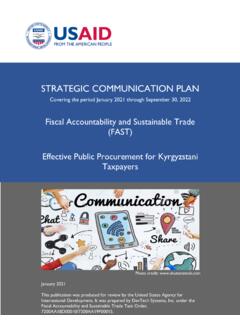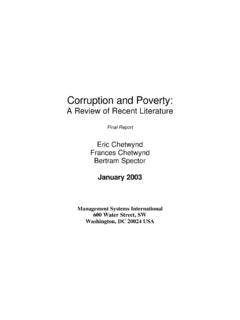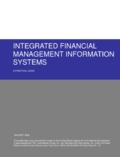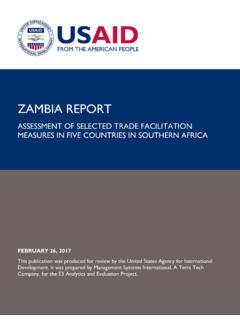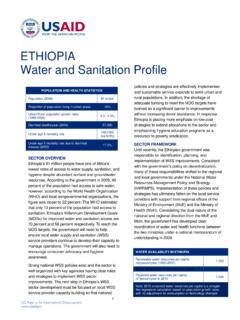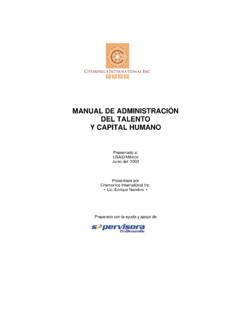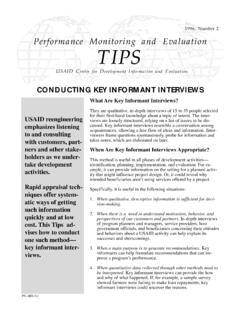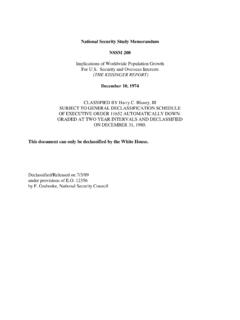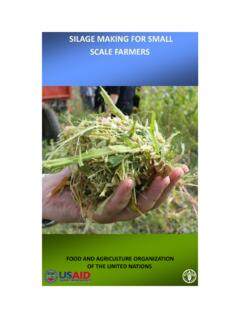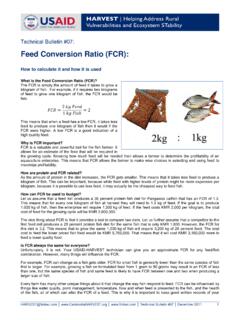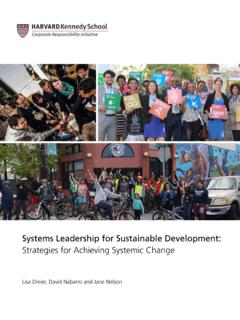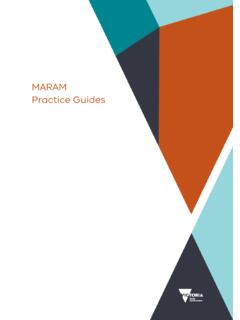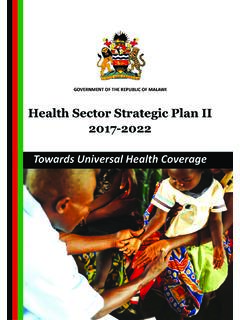Transcription of MANGROVES AND CLIMATE CHANGE
1 MANGROVES AND CLIMATE . CHANGE . BACKGROUND BRIEF. In the context of reducing emissions from deforestation and forest degradation (REDD+), a great deal of emphasis has been placed on evaluating and monitoring the role of traditional, inland forest cover, especially tropical forests across Latin America, Africa and Asia. However, recent developments in research and CLIMATE CHANGE science have found that other sources of carbon sequestration and storage can have an important impact on mitigation and adaptation. One major ecosystem that has become a subject of interest in combatting CLIMATE CHANGE is that of mangrove forests. These coastal ecosystems are considered important in terms of carbon sequestration potential and adaptation to CLIMATE CHANGE impacts. Consequently, work is underway by the international environmental community to incorporate MANGROVES into CLIMATE considerations, including in regards to REDD+.
2 As understanding around MANGROVES and their role in CLIMATE CHANGE grows, they are also being incorporated into another category referred to as blue carbon. Blue carbon refers to carbon captured by living organisms in coastal and marine ecosystems, including (but not limited to) salt marshes, MANGROVES and sea grass beds. As opposed to forest carbon, where the storage mostly takes place in aboveground biomass, the majority of blue carbon is found in soil. These ecosystems play an important role in carbon sequestration and storage, and some studies estimate that blue carbon has an annual sequestration rate two to four times greater than tropical forests. This issues brief seeks to provide basic background information and overviews of some of the major players, institutions, initiatives, organizations and projects that are working with MANGROVES specifically, and blue carbon more generally.
3 It is important to note that there is some overlap between these two areas of research. Links are provided throughout that contain more detailed information, written reports, and references. INSTITUTIONS, ORGANIZATIONS AND PROJECTS WORKING IN THE FIELD OF MANGROVES . 1) United Nations Environment Programme (UNEP): Regional Seas Program a. Report (in English and French): MANGROVES of Western and Central Africa b. UNEP prioritizes Coastal Zone ecosystems and their management, and has developed guidelines for Integrated Coastal Area Management (ICAM), which includes considerations about MANGROVES . 2) United Nations Framework Convention on CLIMATE CHANGE (UNFCCC). a. In coordination with IUCN and the Ramsar Secretariat, the Clean Development Mechanism (CDM). Executive Board of the UNFCCC has developed methodology guidelines for Afforestation and reforestation of degraded mangrove habitats.
4 '. b. Some CDM Projects have already been submitted to the UNFCCC that deal with mangrove restoration, including a project in Senegal. 3) Food and Agriculture Organization of the United Nations (FAO). a. Published a report in 1994 titled Mangrove forest management guidelines . b. Along with ISME and ITTO, FAO published a World Atlas of MANGROVES in 2010, which includes 600 full-page maps and a comprehensive country-by-country assessment (The document is not accessible for free, must be purchased via Earthscan). 4) United Nations Forum on Forests (UNFF). a. Released an educational video on MANGROVES on YouTube in May, 2013. b. Initiated by the Government of Nicaragua, the UNFF is implementing the Regional Initiative for the Transfer of Environmentally Sound Technologies for the Sustainable Management of Mangrove Ecosystems in Latin America and the Wider Caribbean.
5 5) International Tropical Timber Organization a. Manages the Global Mangrove Database and Information System (GLOMIS). b. Project portfolio i. Currently in Phase II of a Mangrove project along the Pacific Coast of Panama, implementing rehabilitation activities and training communities to proactively manage their mangrove forest resources ii. Manage a number of mangrove projects in the Asia-Pacific region that are linked directly to tsunami relief and recovery, in Thailand, China, etc. iii. Africa: sustainable community management mangrove ecosystem project with the government of Ghana; conservation and mangrove rehabilitation study in Togo 6) Global Environment Facility (GEF). a. Launched a $24 million project in India in 2011to promote CBNRM and mangrove conservation in the Godavari River Estuary b.
6 Along with the UNDP, implementing the Effective Conservation and Sustainable Use of Mangrove Ecosystems in Brazil Project c. In a project with the World Bank, AusAID and the New Zealand Aid Programme, have planted 37,000 mangrove seedlings on Pacific islands such as Arunaka, Tarawa and Kiribati. 7) The World Bank a. Bangladesh Mangrove Afforestation Project: 6 year, $11 million project in the 1980s covering plantation costs and support services for residents living near the plantations b. Vietnam Coastal Wetlands Protection and Development Project: 8 year, $65 million project from 1999-2007 that provided seedlings, civil works and other inputs for planting and rehabilitation of mangrove forests in the Mekong delta 8) World Conservation Monitoring Center (WCMC). a. Implemented by UNEP, the WCMC develops data sets to support ecosystem conservation around the world, including information on MANGROVES distribution data from various sources b.
7 WCMC has developed an online tool that maps mangrove distribution and location across the African continent. c. The WCMC and IUCN's World Commission on Protected Areas jointly created and manage the World Database on Protected Areas (WDPA), an online resource that shares information about conservation data, deforestation and other tools. The WDPA lists several MANGROVES and wetlands areas, and also integrates data with Ramsar sites. 9) International Society for Mangrove Ecosystems (ISME). a. Comprised of over 1000 individual members and 40 institutional members, ISME coordinates with other international bodies working on MANGROVES (UNEP, FAO, etc.) to develop resources and publications that facilitate proper management and conservation of the ecosystem. b. Finalized in 1992, ISME produced a World Charter for MANGROVES to complement the UN's World Charter for Nature.
8 C. Most documents are not free to the public, but can be ordered on their website. 10) MANGROVES for the Future (MFF). a. MFF is an initiative implemented by IUCN and UNDP, created largely in response to the 2004. tsunami in India, and fueled by the Clinton Global Initiative's goal to improve human livelihood via coastal restoration b. The organization's action plan is implemented jointly by IUCN and UNDP, along with the regional country partners, and partner institutions including CARE, FAO, UNEP and Wetlands International. Its goals include knowledge building and sharing, strengthening local institutions charged with managing coastal ecosystems, and improving ecosystem governance . c. Their website contains over 200 documents covering various regional and technical topics. 11) The Mangrove Alliance a.
9 Initiated in 2010 with support from the Conservation leadership Programme and the US Forest Service, with funding from the MacArthur Foundation b. Awarded first grant to BirdLife in the Dominican Republic to catalyze community-based mangrove conservation in the Insular Caribbean c. Also commissioned several case studies with other BirdLife partners in Latin America and Caribbean 12) The Global Aquaculture Alliance a. Has published a white paper on MANGROVES , and conducts analysis of other institutional assessments of MANGROVES , including critique of National Geographic's assertion that global shrimp farming threatens MANGROVES 13) Wetlands International a. Have a program called Mangrove Capital, which hopes to increase the value of MANGROVES on a widespread, institutional and governmental level b.
10 Several mangrove restoration projects across West Africa and Southeast Asia c. Also operate a sustainable shrimp production project in Indonesia (2010-2014) in partnership with IUCN and Oxfam INSTITUTIONS, ORGANIZATIONS AND PROJECTS WORKING IN THE FIELD OF BLUE CARBON. 1) The Blue Carbon Initiative a. Coordinated by IUCN, CI, and UNESCO's Intergovernmental Oceanographic Commission, the Blue Carbon Initiative promotes conservation management and financing for blue carbon ecosystems by working with local, national and international governing bodies i. The initiative is divided between two working groups, The International Blue Carbon Policy Working Group and the International Blue Carbon Scientific Working Group. Both meet several times per year and coordinate to produce scientifically sound policy recommendations ii.
